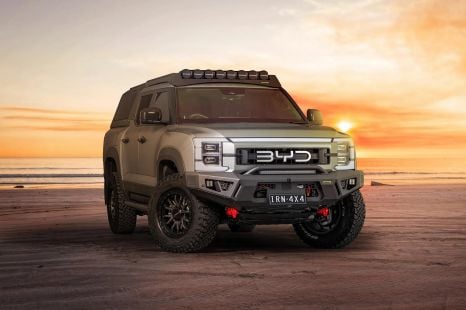

William Stopford
BYD Shark 6 gets higher payload thanks to GVM upgrade
22 Hours Ago
It's finally here. The 2023 Volkswagen Amarok has been revealed, ahead of its arrival in Australia next year.

Contributor


Contributor
By Scott Collie and Mike Costello
Volkswagen has finally revealed its all-new Amarok ute, ahead of its anticipated arrival in Australia early in 2023.
The new Amarok is built on the same platform as the Ford Ranger, with power from a choice of five engines.
Single- and dual-cab bodies will be offered depending on market, with a payload up to (almost) 1.2 tonnes and a braked towing capacity up to 3.5 tonnes.
Volkswagen will offer five trim levels: Amarok, Life, Style, PanAmerica, and Aventura.
Inside, a 10.0-inch or a 12.0-inch portrait touchscreen infotainment system will feature in the middle of the dashboard. A digital instrument cluster will also feature.
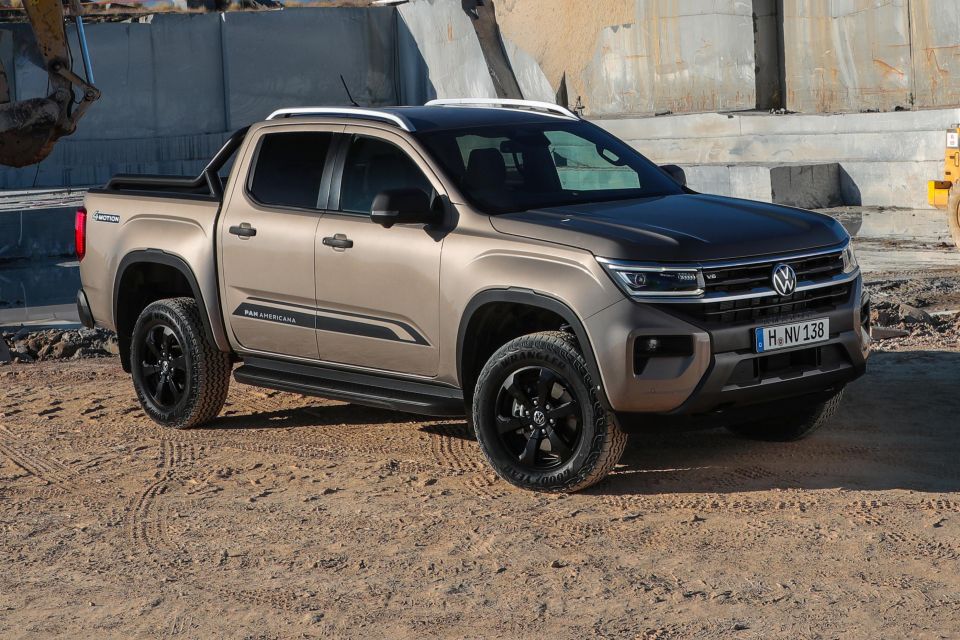

As we all know the new model is based on the new-gen Ford Ranger’s platform and shares its key mechanicals, while promising huge modernisation over its predecessor model that dates back to 2010, and V6 engine aside is looking and feeling quite dated.
It also stands apart from its Ford platform twin with unique exterior and interior designs, and thereby looks to be no mere badge-engineering exercise.
While the new Amarok is billed as a “key pillar” for Volkswagen Commercial in Asia, Africa and Europe, this is particularly true for Australia – likely to be its number-one global market due to our love of mid-sized utes.
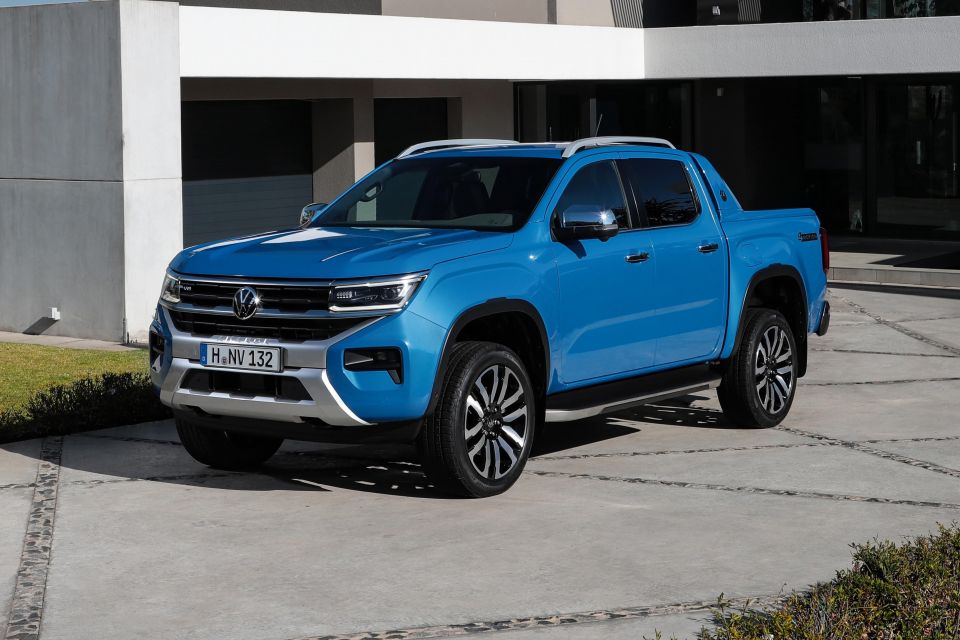

Small wonder then, that much of the design and engineering was done in Australia, where VW staff were embedded with the Ford Ranger development program.
It’s also a near-certainty the Amarok will be the single top-selling Volkswagen Group product in Australia once it arrives in early 2023, with pricing to be announced around November this year.
This time around, it’ll be built in South Africa rather than Argentina as before, and unlike the Ranger which is made in Thailand.
MORE: 2023 Volkswagen Amarok: Australia keen on 2.3-litre turbo-petrol MORE: No plan for Volkswagen Amarok SUV, based on Ford Everest
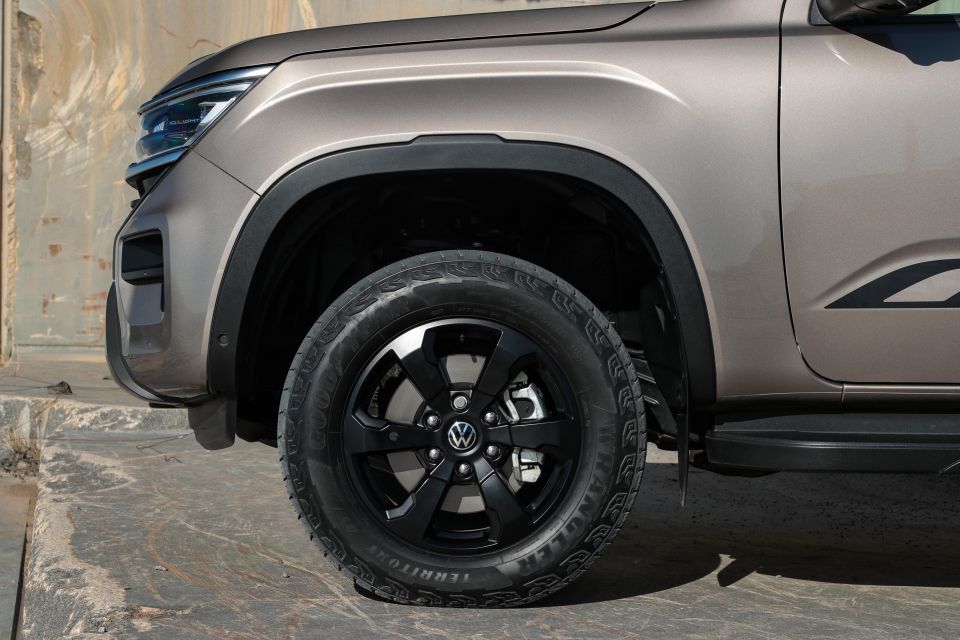
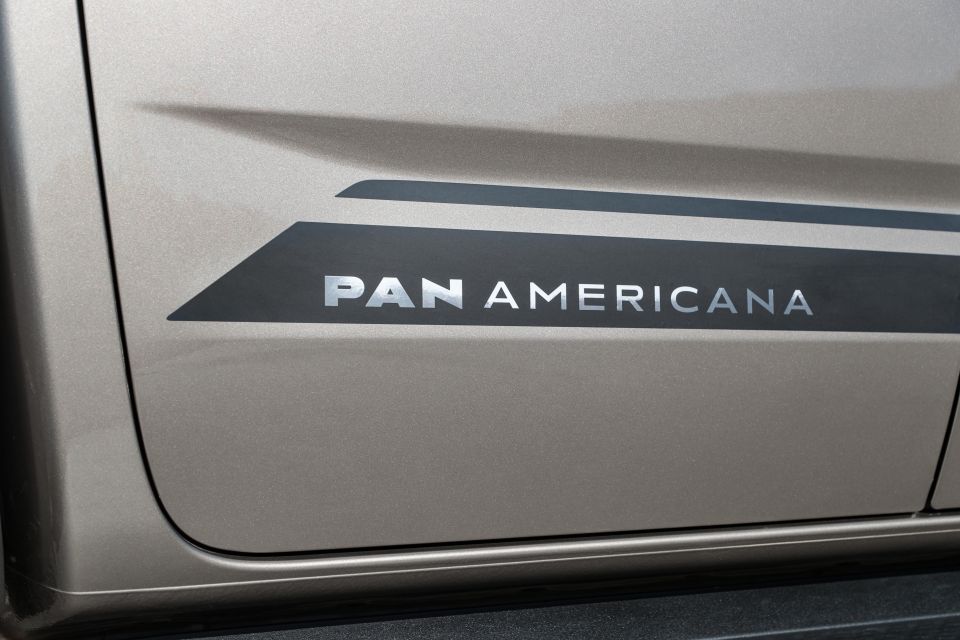
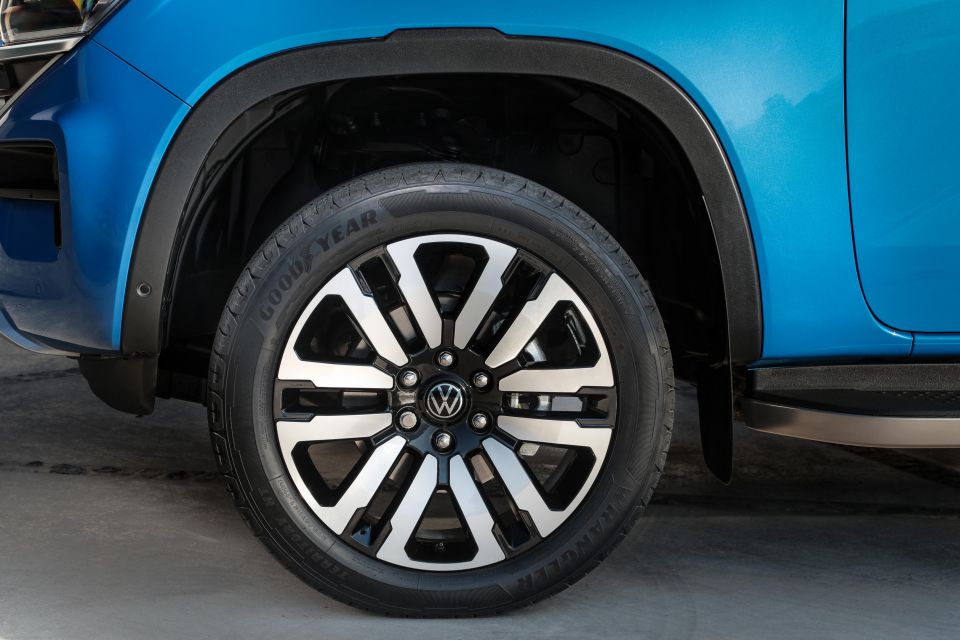
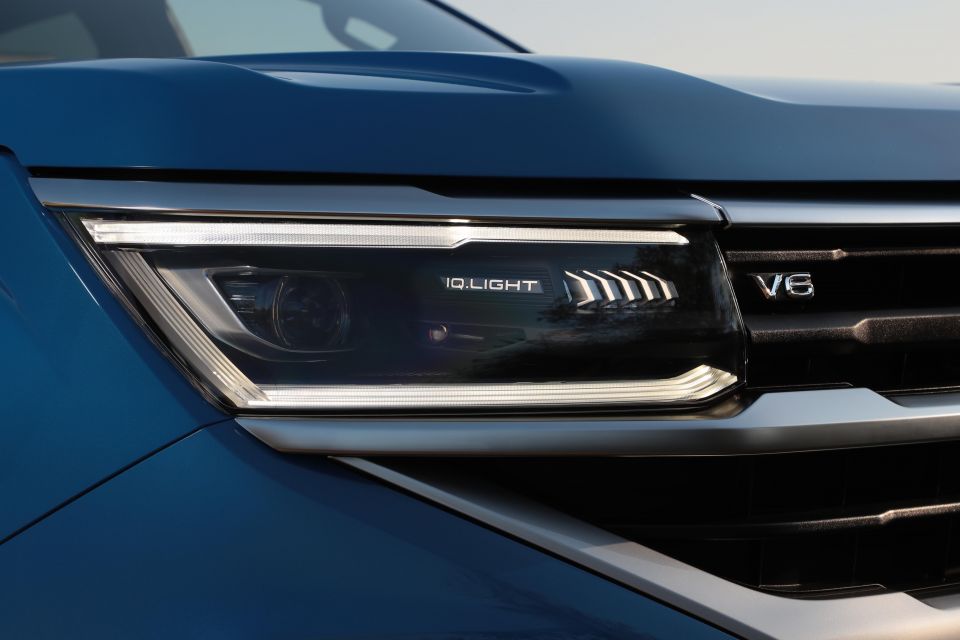
Power in the Amarok will come from a range of five Ford engines; four turbo-diesels, and one turbo petrol.
Three 2.0-litre four-cylinder diesels are being offered. The base is a single-turbo unit with 110kW/350Nm or 125kW/405Nm.
The former is offered with rear-wheel drive and a five-speed manual as standard, the latter gets a choice of rear- or switchable four-wheel drive and a six-speed manual. Six-speed automatics are also offered.
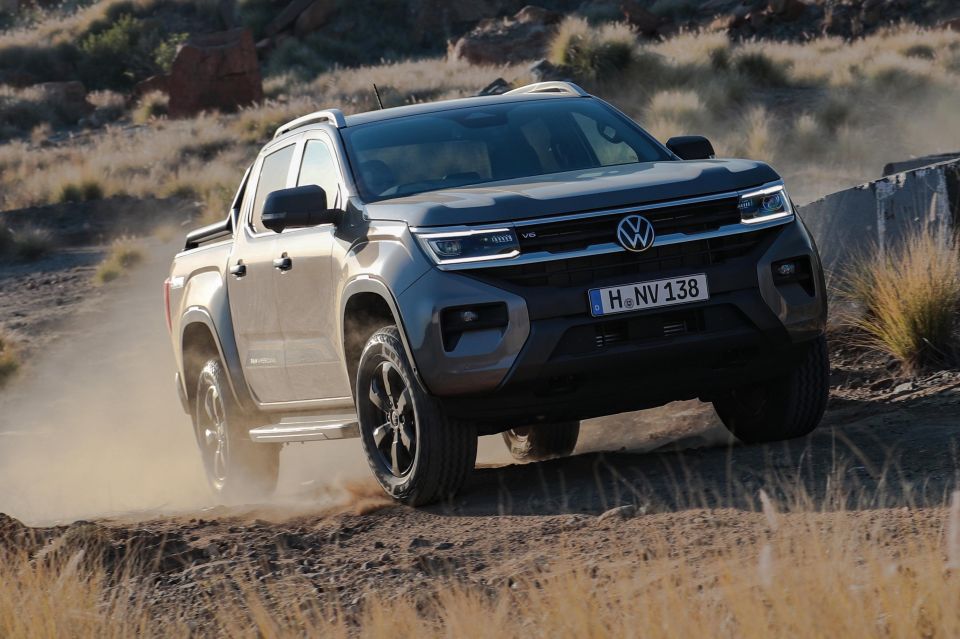
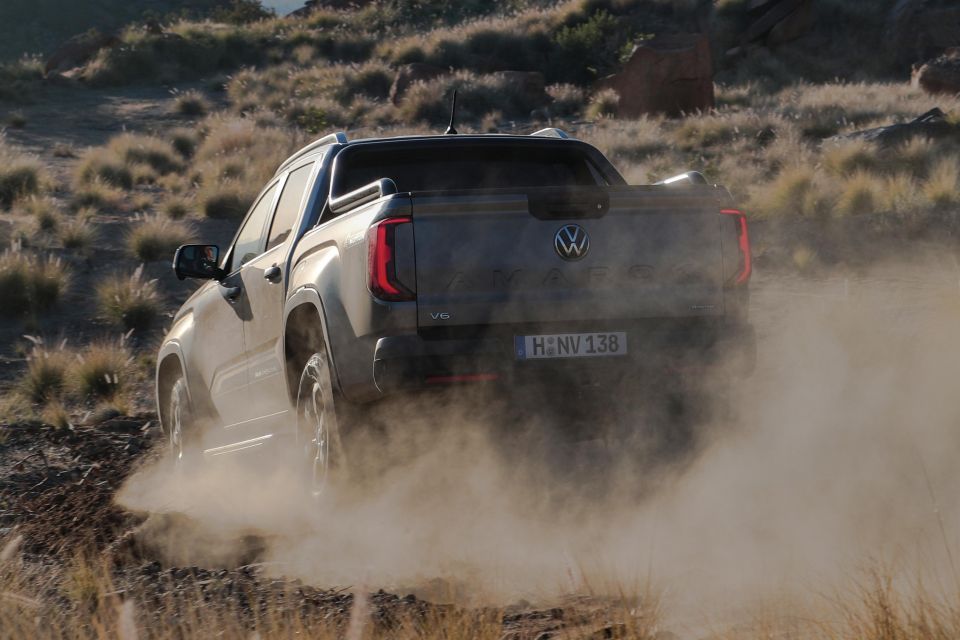
Next in line is a bi-turbo unit with 150kW or 154kW of power, and 500Nm of torque. Depending on market, it’ll be mated with either a six- or 10-speed automatic transmission and eight part- or full-time four-wheel drive. It’s expected that this will be the base Australian model.
The range-topping diesel will be a Ford (not Volkswagen) 3.0-litre V6 with 177kW or 184kW (depending on market) and 600Nm of torque. It’s mated with full-time four-wheel drive and a 10-speed automatic. The latter 184kW matches that of the Ranger.
Some markets (including Australia) will be offered with a 2.3-litre turbo petrol four-cylinder making 222kW and 452Nm, with full-time four-wheel drive and a 10-speed auto.
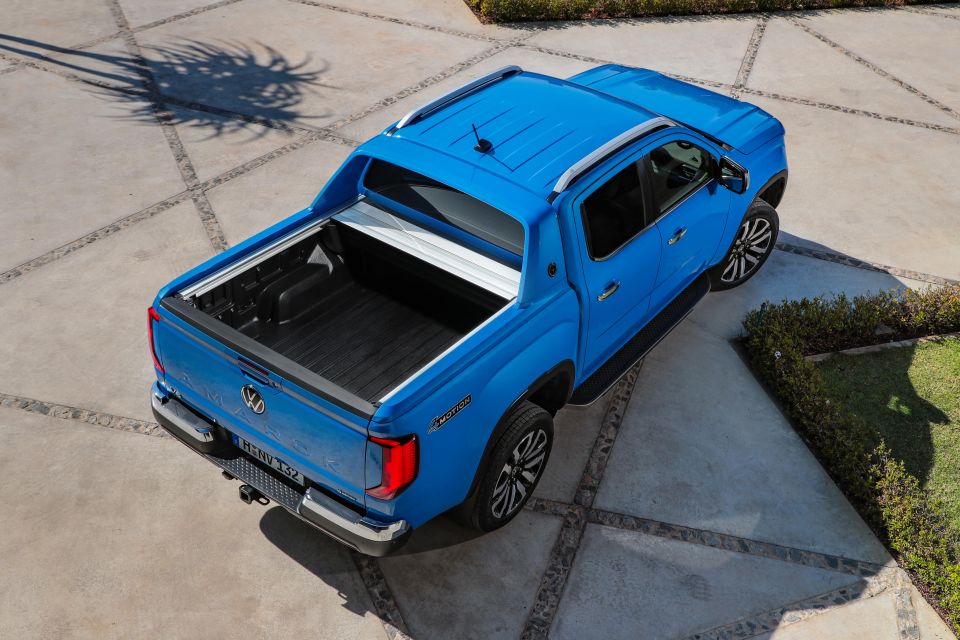
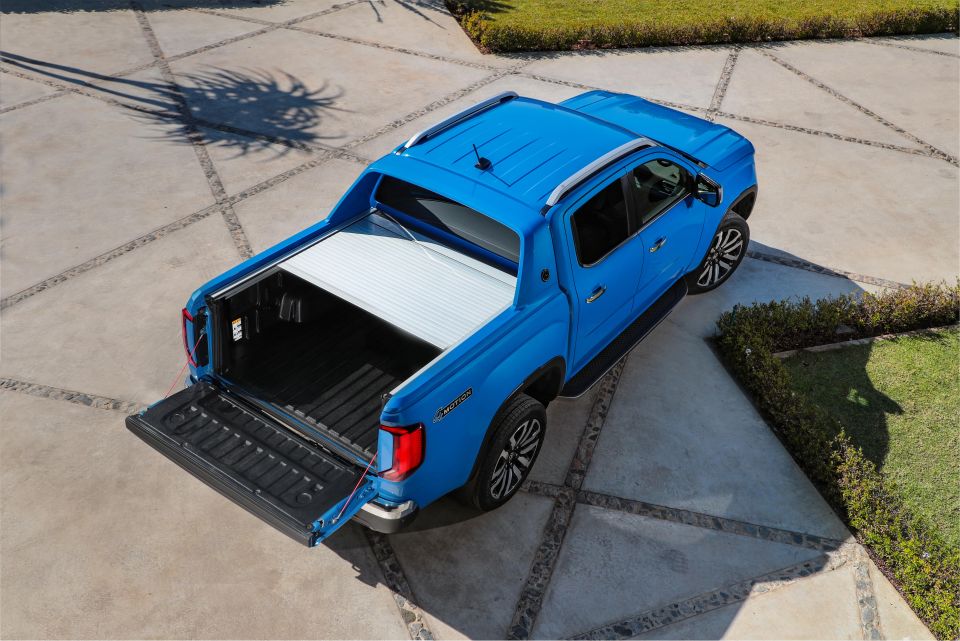
All models will have an 80L fuel tank, and TDI models now have a 19.3L AdBlue tank instead of the 6.3L unit on the outgoing car.
The Raptor’s twin-turbo petrol six is off the table, while electrification has been vaguely promised down the track.
Braked towing capacity is up to 3.5 tonnes and there’s a 6.5-tonne gross combined mass, and payload is up to 1.2 tonnes.
Off-road capability is said to be improved. Fording depth has increased from 500 to 800mm; and thanks to the now-shorter overhangs, the front angle of approach figure is now 29 degrees, the departure angle is 21 degrees, and the ramp angle is 21 degrees.

The new Amarok goes big on screens. The whole range, from base to top-spec cars, will feature vertically-oriented touchscreens in the centre of the dashboard.
The smaller option is a 10-inch unit, the top-spec option is a 12.0-inch unit. Base models will feature an 8.0-inch digital cockpit in front of the driver, while top-spec cars will get a full-digital 12-inch unit.
Apple CarPlay and Android Auto will feature across the range, as will dual USB ports. Volkswagen says a focus was placed on blending touchscreens and modern inputs with old-fashioned buttons for the sort of rugged, work-oriented buyers who like the Amarok.
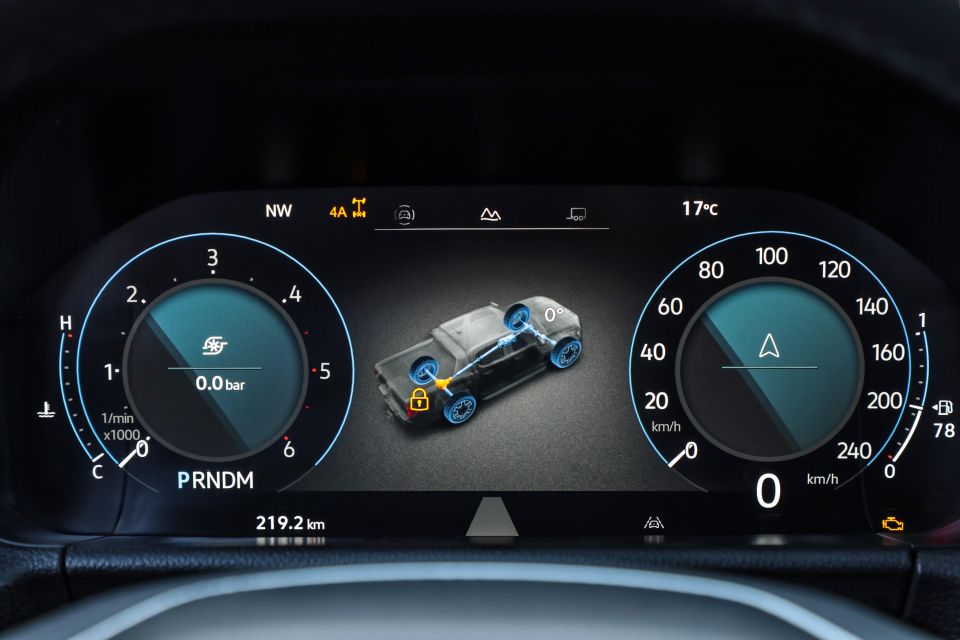
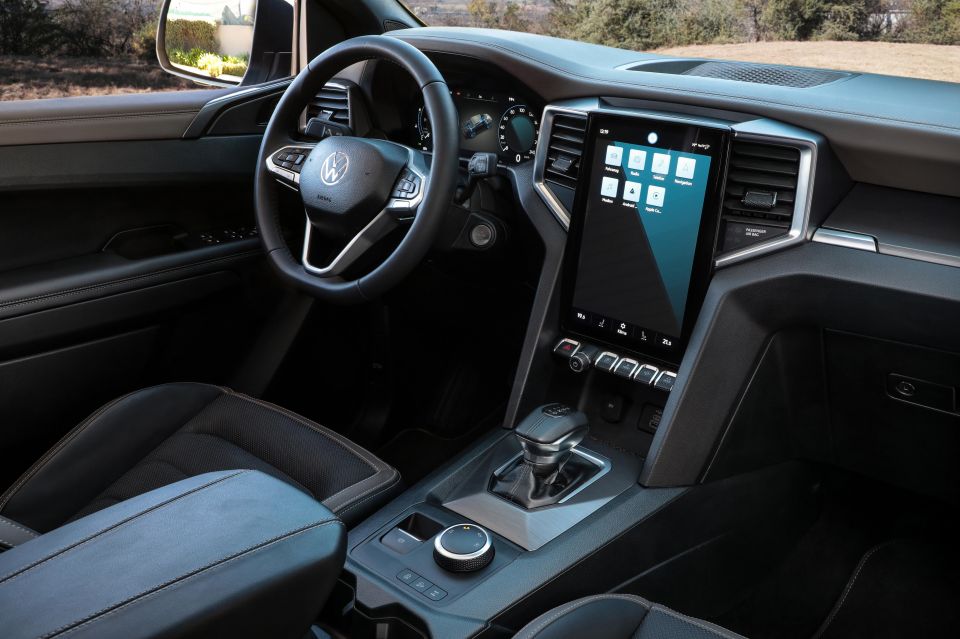
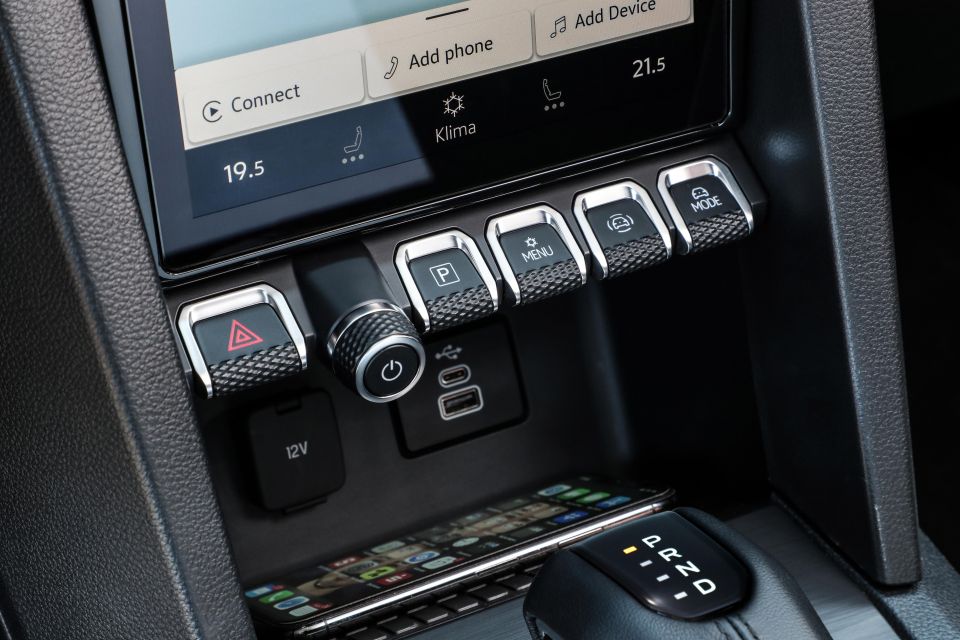
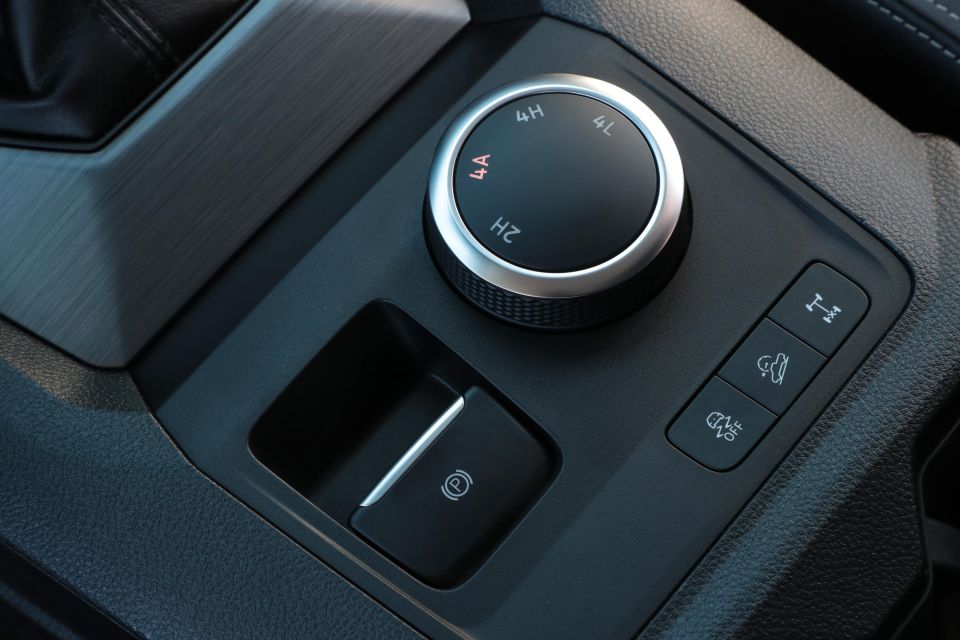
That means the screen sits above a row of hard function keys, which are finished in what looks like rugged rubber. High-end models will feature aluminium around that row of keys.
With a longer wheelbase and bigger body, Volkswagen says passenger space in the rear has improved compared to the older car.
There are 20 storage spaces around the cabin, and available features in Europe will include a wireless phone charger, keyless entry and push-button start, dual-zone climate control, and a three-pin power socket in the cabin.
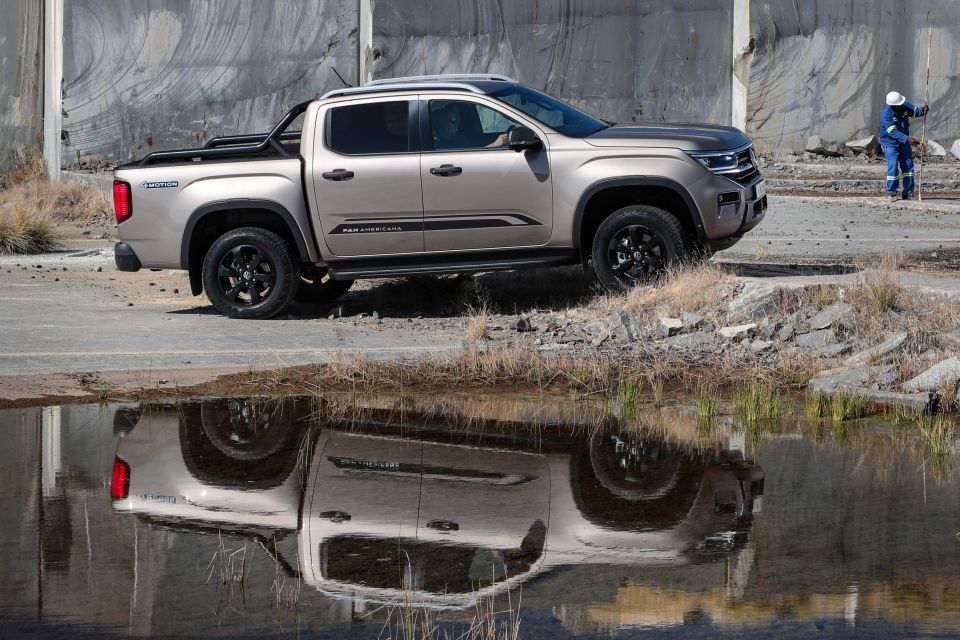
The last Amarok was short on active safety features. The new one won’t be.
Available technology will include autonomous emergency braking, lane-keeping assist, rear cross-traffic alert, blind-spot monitoring, traffic sign recognition, and adaptive cruise control.
Hands-free parking will also be offered on some models, along with front and rear parking sensors and a surround-view camera.
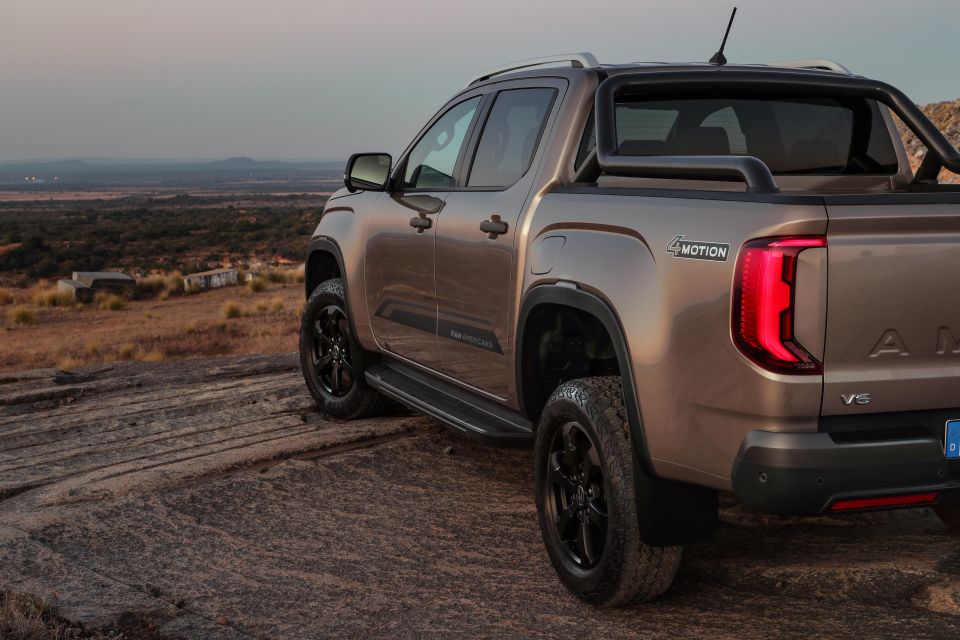
Expect a full gamut of airbags to feature for both front and rear occupants, unlike in the previous model (which missed out on rear side airbags).
Like the related Ford Ranger, the Amarok will be offered with Matrix LED headlights at the top end of the range.
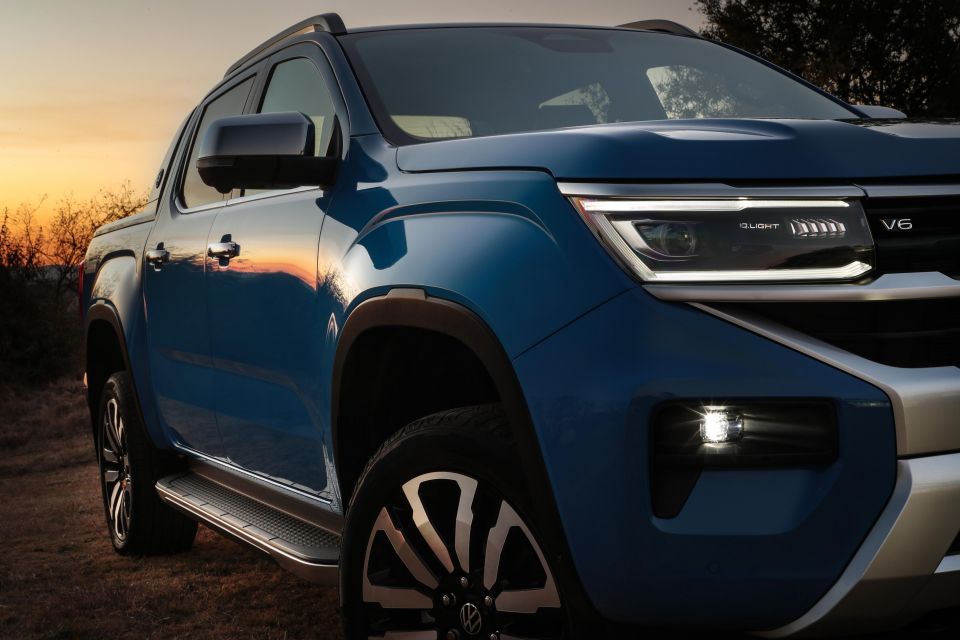
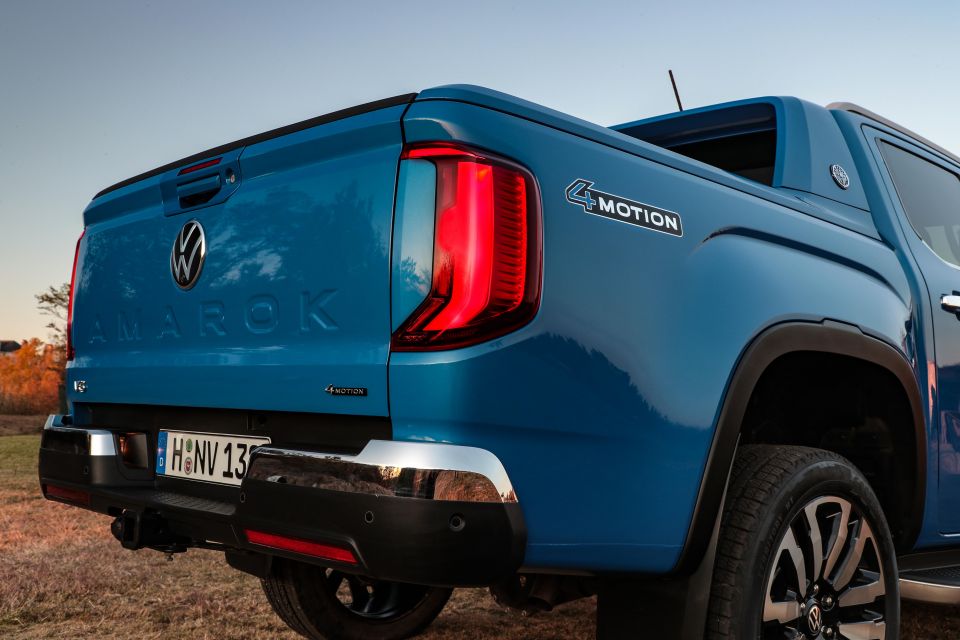
Designed in Melbourne, development of the Amarok began more than three years ago. Volkswagen says it insisted on the Amarok having its own look and feel, whatever that means.
“It’s an all different car on the same technical platform,” says Volkswagen.
The grille design is completely different from the Ford with a more horizontal theme and slimmer standard LED headlights, as is the lower bumper. From the side there looks to be different door sculpting and blisters above the squared-off arches.
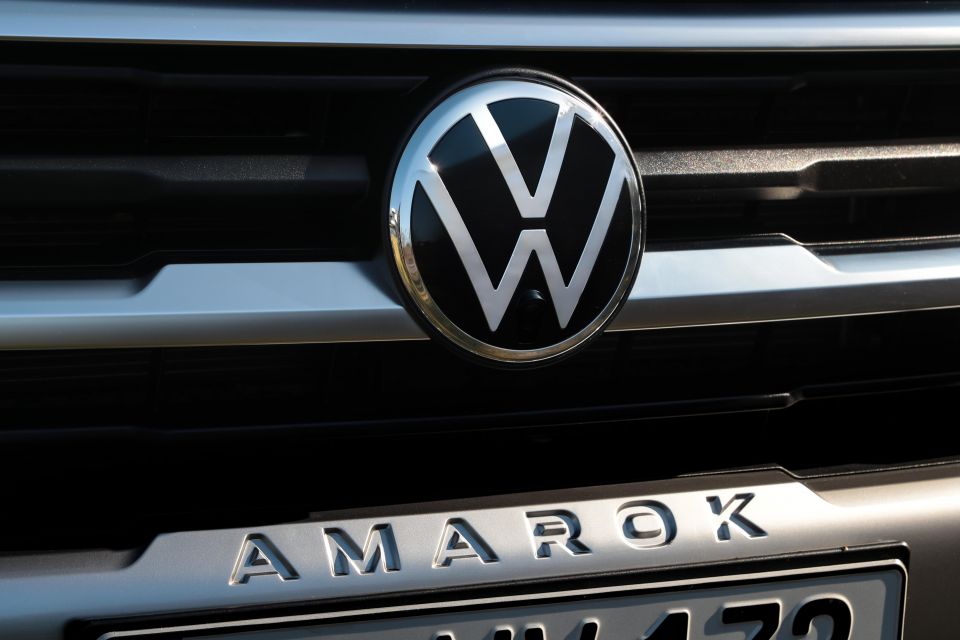

At the rear, there are distinctive C-shaped tail lights, different bar work, and different tailgate sculpting with AMAROK stamped into the metal. There are also different wheels, sized up to 21 inches.
At 5350mm long, the new model is 96mm longer than before. Its 3270mm wheelbase is up 173mm, promising more interior space for back seat passengers in particular. Because the wheelbase has also grown more than the overall length, the overhangs are shorter.
The new model is 1910mm wide, or 2204mm including mirrors, which is wider than before. Depending on wheel/tyre combination, the Amarok’s height is up to 1888mm, similar to the old car.
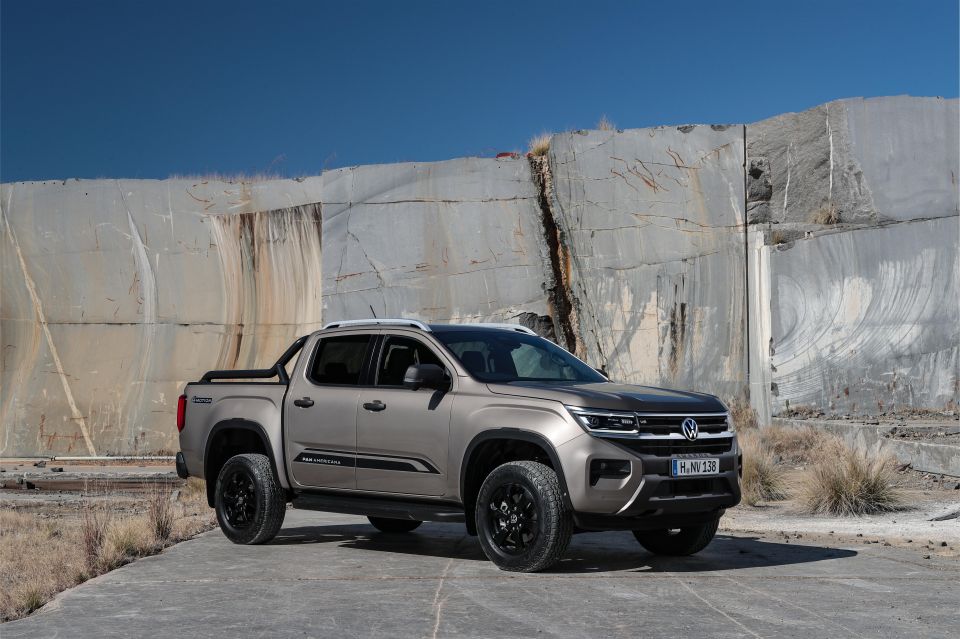
There will be eight colours to choose from in the Amarok configurator: the ‘Clear White’ single-colour paintwork finish, plus the metallic shades ‘Midnight Black’, ‘Bright Blue’, Light Grey’, ‘Dark Grey’, ‘Deep Red’, ‘Bright Beige’ and ‘Mid Blue’.
As was the case on the predecessor, the cargo bed between the wheel arches has enough room for a Euro pallet loaded in sideways, strapped down via eye rings on the cargo bed, which can each take a load of up to 500kg.
The cargo box can also be secured using an electrically operated roll cover with remote control on fancy grades. Static roof load capacity is 350 kg – sufficient for a four-person roof tent.
Click on the images to view a full gallery.
Where expert car reviews meet expert car buying – CarExpert gives you trusted advice, personalised service and real savings on your next new car.
Scott Collie is an automotive journalist based in Melbourne, Australia. Scott studied journalism at RMIT University and, after a lifelong obsession with everything automotive, started covering the car industry shortly afterwards. He has a passion for travel, and is an avid Melbourne Demons supporter.


William Stopford
22 Hours Ago
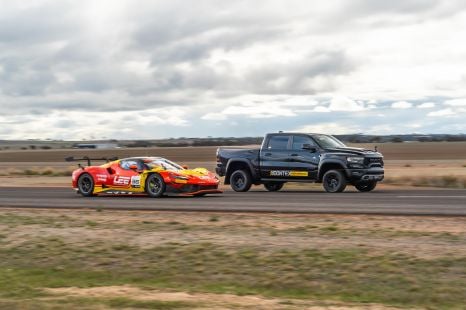

Paul Maric
3 Days Ago


Josh Nevett
4 Days Ago


James Wong
4 Days Ago
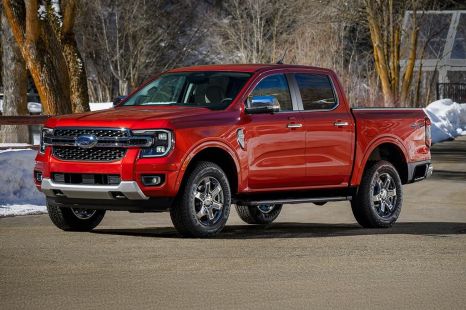

Damion Smy
8 Days Ago


Max Davies
9 Days Ago